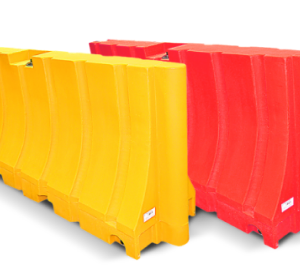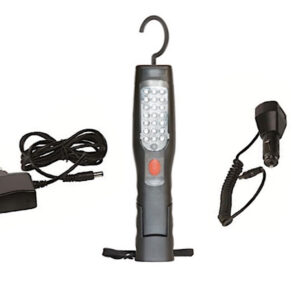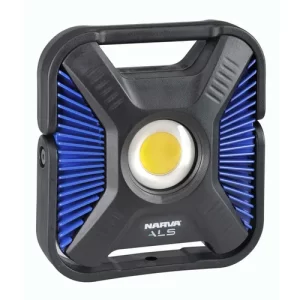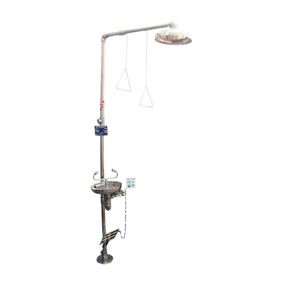FIRE EXTINGUISHING CONTROL PANEL
- Brand: FIRE SOLUTION TECHNOLOGY
FIRE EXTINGUISHING CONTROL PANEL (FECP) serves as the central hub in fire suppression systems, orchestrating the detection, activation, and control of fire suppression agents. It plays a pivotal role in safeguarding lives, protecting property, and ensuring the efficient operation of fire suppression systems in various environments. Understanding the importance of a fire extinguishing control panel involves recognizing its critical functions, regulatory compliance aspects, and contributions to overall fire safety strategies.
#### Critical Functions of Fire Extinguishing Control Panel:
1. **Detection and Alarm Coordination:**
– **Sensor Integration:** The FECP integrates with fire detection devices such as smoke detectors, heat sensors, and flame detectors. Upon detecting fire or smoke, these sensors transmit signals to the control panel.
– **Alarm Activation:** The FECP processes these signals to activate audible and visual alarms, alerting occupants and initiating emergency response procedures.
– **Real-Time Monitoring:** It continuously monitors the status of detection devices and alarms, providing real-time information on fire incidents to ensure prompt response.
2. **Suppression System Activation:**
– **Agent Selection:** Depending on the type of fire and suppression requirements, the FECP selects the appropriate fire suppression agent, such as water, foam, gas (e.g., CO2, FM-200), or dry chemicals.
– **Activation Signals:** It sends activation signals to release the suppression agent into the protected area, either automatically or manually triggered by personnel in response to detected fire conditions.
– **Sequence Control:** The FECP ensures that the activation sequence of suppression agents is coordinated to effectively combat the fire while minimizing damage and ensuring safety.
3. **Safety and Evacuation Support:**
– **Occupant Notification:** Beyond activating alarms, the FECP may integrate with building management systems (BMS) to initiate evacuation procedures, including unlocking doors, controlling elevators, and guiding occupants to safe exits.
– **Emergency Communication:** Some advanced panels incorporate communication features to alert emergency services and provide essential information about the fire incident, enhancing coordinated response efforts.
4. **System Monitoring and Maintenance:**
– **Fault Detection:** The FECP monitors system components for faults, failures, or malfunctions, such as low agent pressure, wiring issues, or sensor failures. Timely detection allows for prompt maintenance and repairs to ensure system reliability.
– **Performance Logging:** It records and logs system events, alarms, and maintenance activities, providing a historical record for compliance audits, troubleshooting, and system performance evaluation.
5. **Compliance with Regulations and Standards:**
– **Regulatory Requirements:** Fire extinguishing control panels are essential for compliance with local, national, and international fire safety regulations and standards (e.g., NFPA, EN, UL). They ensure that fire suppression systems meet specific design, installation, and operational requirements to enhance safety and minimize risks.
#### Regulatory Compliance and Standards:
– **NFPA Standards:** The National Fire Protection Association (NFPA) standards, such as NFPA 72 (National Fire Alarm and Signaling Code) and NFPA 2001 (Standard on Clean Agent Fire Extinguishing Systems), provide guidelines for the design, installation, and maintenance of fire extinguishing control panels and associated systems.
– **EN Standards:** European standards, such as EN 54 (Fire detection and fire alarm systems), EN 12094 (Fixed firefighting systems – Components for gas extinguishing systems), and EN 15004 (Fixed firefighting systems – Gas extinguishing systems), outline requirements for performance, reliability, and effectiveness of fire suppression systems.
– **UL Certification:** Underwriters Laboratories (UL) certification ensures that fire extinguishing control panels and systems meet rigorous safety and performance standards recognized internationally, providing assurance of reliability and compliance with regulatory requirements.
#### Importance in Various Environments:
1. **Commercial Buildings:** Office complexes, retail stores, hotels, and healthcare facilities rely on FECPs to protect occupants, assets, and infrastructure from fire hazards, ensuring business continuity and safety compliance.
2. **Industrial Facilities:** Manufacturing plants, warehouses, refineries, and chemical processing facilities utilize FECPs to safeguard critical operations, equipment, and personnel from fire risks associated with combustible materials and processes.
3. **Transportation Sector:** Airports, seaports, railway stations, and transit hubs deploy FECPs to protect passengers, cargo, and infrastructure from fire incidents, maintaining operational safety and regulatory compliance.
4. **Healthcare Facilities:** Hospitals, clinics, and medical centers rely on FECPs to ensure the safety of patients, staff, and sensitive medical equipment, mitigating fire risks in high-risk healthcare environments.
5. **Data Centers:** Facilities housing servers, IT equipment, and sensitive electronics utilize FECPs to prevent downtime and data loss caused by fire, employing specialized suppression agents compatible with sensitive equipment.
6. **Critical Infrastructure:** Power plants, telecommunications facilities, and water treatment plants install FECPs to protect essential services and infrastructure from fire hazards, ensuring continuity of operations and public safety.
### Advantages of Fire Extinguishing Control Panel
Fire extinguishing control panels offer numerous advantages that contribute to their effectiveness and reliability in fire protection systems:
1. **Centralized Control:** They provide centralized control and monitoring of fire detection and suppression systems, allowing for quick assessment, decision-making, and response coordination during fire emergencies.
2. **Enhanced Safety:** FECPs facilitate prompt detection and suppression of fires, minimizing risks to occupants, firefighters, and property by ensuring rapid deployment of appropriate suppression agents.
3. **Operational Efficiency:** By automating fire detection, alarm activation, and suppression agent release processes, FECPs optimize response times and operational efficiency, reducing the impact of fire incidents on business operations.
4. **Scalability and Flexibility:** They can be tailored to meet specific fire protection requirements and operational needs, accommodating changes in building layouts, occupancy types, and fire hazards over time.
5. **Integration Capabilities:** FECPs integrate seamlessly with other building systems, such as HVAC controls, access control systems, and emergency lighting, enhancing overall building management and emergency response capabilities.
6. **Reliability and Durability:** Designed for reliability and durability, FECPs are engineered to withstand harsh environmental conditions, power fluctuations, and operational demands, ensuring continuous performance and system integrity.
### Uses of Fire Extinguishing Control Panel
Fire extinguishing control panels are utilized in a wide range of applications and environments where fire suppression and safety are paramount:
1. **Fire Trucks and Emergency Vehicles:** Mobile fire suppression systems in fire trucks and emergency response vehicles utilize compact FECPs to manage onboard fire suppression agents and equipment during firefighting operations.
2. **Fixed Fire Suppression Systems:** Building-wide fire suppression systems, including sprinkler systems, gas-based extinguishing systems (e.g., CO2, FM-200), and foam systems, are controlled and monitored by FECPs to protect large areas and critical infrastructure.
3. **Specialized Environments:** Hazardous environments, clean rooms, and sensitive facilities requiring specialized fire suppression agents and strict environmental controls rely on FECPs for safe and effective fire protection tailored to specific operational requirements.
4. **High-Risk Industries:** Industries handling flammable liquids, combustible materials, and hazardous processes, such as oil and gas, chemical manufacturing, and petrochemical refining, deploy FECPs to mitigate fire risks and ensure regulatory compliance.
5. **Government Facilities:** Military bases, government buildings, embassies, and diplomatic missions utilize FECPs to protect national security interests, sensitive information, and critical infrastructure from fire hazards and threats.
6. **Commercial Complexes:** Shopping malls, entertainment venues, educational institutions, and residential buildings install FECPs to safeguard occupants, tenants, and visitors from fire incidents, ensuring compliance with building codes and safety regulations.
### Conclusion
In conclusion, fire extinguishing control panels are indispensable components in fire suppression systems, providing centralized control, monitoring, and coordination of fire detection and suppression activities. Their critical functions, including detection integration, alarm activation, suppression agent selection, and safety system integration, enhance fire safety measures, protect lives and property, and ensure compliance with regulatory standards. The advantages of FECPs, such as operational efficiency, scalability, integration capabilities, and reliability, make them essential in diverse environments and industries where fire risks must be effectively managed. By understanding their importance, advantages, and applications, stakeholders can implement robust fire protection strategies, enhance emergency preparedness, and safeguard environments against the devastating impact of fires.
Only logged in customers who have purchased this product may leave a review.
Please Login To Download Attachment
General Inquiries
There are no inquiries yet.










Reviews
There are no reviews yet.